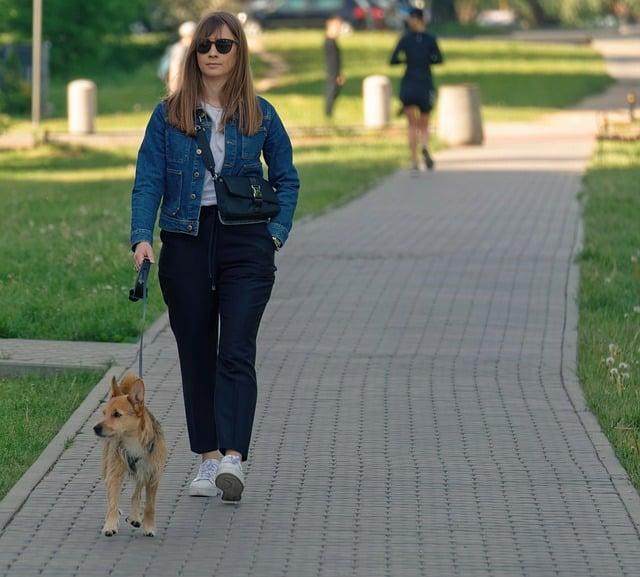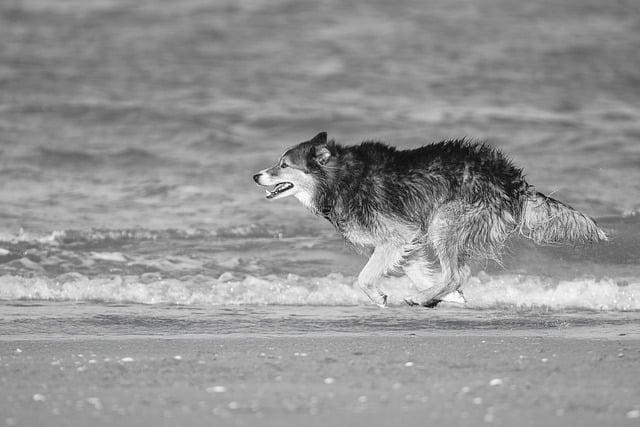Imagine coming home after a long day, and your dog greets you with a wagging tail and bright eyes, as if you’re the best part of their day. But how can you truly tell if your furry friend is happy living with you? Look for signs like playful behavior, a relaxed body posture, and a willingness to cuddle. A happy dog will also respond eagerly to your commands and show curiosity about their surroundings. By understanding these signals, you can ensure your dog thrives in your care, creating a joyful bond that lasts a lifetime.
Contents
- Understanding Your Dogs Body Language and Behavior
- Creating a Stimulating Environment for Your Dogs Well-Being
- The Importance of Routine and Consistency in Your Dogs Life
- Building a Strong Bond Through Positive Reinforcement and Interaction
- Q&A
Understanding Your Dogs Body Language and Behavior
Understanding your dog’s body language is essential in determining their happiness and overall well-being. A wagging tail is often the first sign that your furry friend is content. However, it’s important to note the position and speed of the wag. A relaxed, wide wag indicates joy, while a stiff, fast wag might suggest excitement or anxiety. Pay attention to the entire body; a dog that approaches you with a loose body and a wagging tail is likely feeling secure and happy in their environment.
Another key indicator of a happy dog is their facial expression. Dogs that are comfortable and content will have soft eyes, relaxed ears, and a slightly open mouth, resembling a smile. In contrast, a dog that is stressed or unhappy may have narrowed eyes, pinned-back ears, and a closed mouth. Observing these subtle cues can help you gauge your dog’s emotional state and ensure they feel safe and loved in your home.
Vocalizations also play a significant role in understanding your dog’s feelings. Happy dogs often express themselves through playful barks, whines, or even howls. If your dog greets you with enthusiasm and engages in playful barking, it’s a sign they are excited to see you and enjoy your company. On the other hand, excessive barking or whining can indicate stress or discomfort, signaling that something may need your attention.
Lastly, consider your dog’s behavior during playtime and social interactions. A happy dog will eagerly participate in games, chase after toys, and engage with both humans and other pets. Look for signs of playfulness, such as a play bow (front legs stretched forward while the back end is up) or a relaxed posture during play. If your dog seeks out your company, initiates play, and shows a willingness to explore their surroundings, it’s a clear indication that they are thriving in their environment and enjoying life with you.
Creating a Stimulating Environment for Your Dogs Well-Being
Creating a stimulating environment for your dog is essential for their overall happiness and well-being. Dogs thrive in spaces that engage their senses and encourage exploration. To achieve this, consider incorporating a variety of textures, scents, and sounds into their surroundings. **Interactive toys**, such as puzzle feeders or treat-dispensing balls, can keep their minds sharp and provide hours of entertainment. Additionally, rotating toys regularly can maintain their interest and excitement.
Another key aspect of a stimulating environment is providing ample opportunities for physical activity. **Daily exercise** is crucial for a dog’s mental and physical health. Engage in activities such as walking, running, or playing fetch in a secure area. You might also explore options like agility training or dog sports, which not only enhance their fitness but also strengthen the bond between you and your furry friend. Remember, a tired dog is a happy dog!
Socialization plays a significant role in a dog’s happiness. Ensure your dog has opportunities to interact with other dogs and people. **Dog parks**, playdates, or training classes can provide valuable social experiences. These interactions help your dog develop confidence and reduce anxiety, making them more adaptable to various situations. A well-socialized dog is often a more content and well-adjusted companion.
Lastly, don’t underestimate the power of a cozy and safe space for your dog to retreat to when they need a break. **Designate a quiet area** in your home with their bed, favorite blankets, and toys. This sanctuary allows them to relax and recharge, which is vital for their emotional health. By thoughtfully creating an environment that caters to their physical, mental, and emotional needs, you can ensure that your dog feels secure, loved, and truly happy living with you.
The Importance of Routine and Consistency in Your Dogs Life
Establishing a routine for your dog is essential for their overall well-being and happiness. Dogs thrive on predictability, and a consistent daily schedule helps them feel secure in their environment. When your dog knows what to expect, from meal times to walks and play sessions, it reduces anxiety and fosters a sense of stability. This predictability is particularly important for puppies and rescue dogs, who may have experienced uncertainty in their past.
Consistency in training and behavior management is equally crucial. When commands and rules are applied uniformly, your dog learns more effectively and feels more confident in their interactions with you. This clarity not only strengthens your bond but also enhances your dog’s ability to respond to commands and behave appropriately in various situations. A well-trained dog is often a happier dog, as they understand their role within the household and can navigate their environment with ease.
Moreover, a structured routine allows for the incorporation of essential activities that contribute to your dog’s physical and mental health. Regular exercise, socialization, and mental stimulation are vital components of a dog’s happiness. By setting aside specific times for these activities, you ensure that your dog receives the necessary outlets for their energy and curiosity. This not only keeps them physically fit but also helps prevent behavioral issues that can arise from boredom or pent-up energy.
Lastly, a consistent routine fosters a deeper emotional connection between you and your dog. When you dedicate time each day to engage with your pet, whether through training, play, or simply cuddling, you reinforce your role as a trusted companion. This bond is crucial for your dog’s happiness, as it provides them with a sense of belonging and love. By prioritizing routine and consistency, you create an environment where your dog can truly thrive, leading to a joyful and fulfilling life together.
Building a Strong Bond Through Positive Reinforcement and Interaction
Creating a joyful environment for your dog is essential for fostering a strong relationship. One of the most effective methods to achieve this is through **positive reinforcement**. This approach not only encourages good behavior but also strengthens the bond between you and your furry friend. When your dog associates your presence with rewards, such as treats, praise, or playtime, they become more attuned to your cues and develop a sense of trust and security.
Interaction plays a pivotal role in your dog’s happiness. Engaging in activities that stimulate both their mind and body can significantly enhance their overall well-being. Consider incorporating a variety of **interactive games** and exercises into your routine, such as:
- Fetch or tug-of-war to promote physical activity
- Puzzle toys that challenge their problem-solving skills
- Training sessions that teach new commands or tricks
These activities not only provide entertainment but also reinforce your role as a loving and attentive owner, making your dog feel valued and cherished.
Moreover, observing your dog’s reactions during these interactions can provide valuable insights into their emotional state. A happy dog will often exhibit behaviors such as wagging their tail, playful barks, and a relaxed posture. By consistently engaging in positive reinforcement and meaningful interactions, you can cultivate an atmosphere where your dog feels safe and content. This mutual understanding will lead to a deeper connection, allowing both of you to thrive in each other’s company.
Remember, the key to a fulfilling relationship with your dog lies in the balance of **affection and discipline**. While it’s important to reward good behavior, establishing boundaries is equally crucial. This combination ensures that your dog understands expectations while feeling loved and appreciated. By nurturing this dynamic, you will not only enhance your dog’s happiness but also create a lasting bond that enriches both your lives.
Q&A
-
What are the signs of a happy dog?
A happy dog often exhibits several key behaviors, including:
- Wagging Tail: A wagging tail, especially when held high, indicates excitement and contentment.
- Playfulness: Engaging in play and showing enthusiasm for toys or games is a clear sign of happiness.
- Relaxed Body Language: A relaxed posture, with loose muscles and a soft expression, suggests your dog feels safe and happy.
-
How can I tell if my dog enjoys spending time with me?
If your dog seeks your company, it’s a strong indicator of their happiness. Look for these behaviors:
- Following You: If your dog follows you around the house, it shows they enjoy being near you.
- Seeking Affection: Dogs that nuzzle, cuddle, or lean against you are expressing their affection and happiness.
- Excited Greetings: A joyful greeting when you come home indicates your dog is happy to see you.
-
Does my dog’s eating and sleeping habits indicate happiness?
Yes, a happy dog typically has a healthy appetite and good sleep patterns. Consider the following:
- Regular Eating: A consistent appetite and eagerness to eat suggest your dog is content and healthy.
- Restful Sleep: A dog that sleeps well and finds comfortable spots to rest is likely feeling secure and happy.
-
Can my dog’s behavior change if they are unhappy?
Absolutely. Changes in behavior can indicate unhappiness. Watch for:
- Avoidance: If your dog starts avoiding you or hiding, it may signal distress or unhappiness.
- Destructive Behavior: Increased chewing or digging can be a sign of boredom or anxiety.
- Excessive Barking: If your dog barks more than usual, it could indicate frustration or a need for attention.
understanding your dog’s happiness is essential for a fulfilling companionship. By observing their behavior and responding to their needs, you can ensure a joyful life together. Invest in their well-being, and you’ll both reap the rewards of a loving bond.

大家好,我是彼得潘,專業的手法身體治療師。我喜歡探索和研究各種主題,並透過與人工智慧的合作分享專業、實用、有趣的文章。我們定期進行人工審核,以確保內容的準確性。如果您發現文章中有任何不準確的地方,請隨時與我們聯繫,我們會及時糾正。您可以透過 [email protected] 與我們聯繫。



